
I started feeling guilty for not creating a travel post yesterday. And these voices in my head are pretty nasty. Hence: next thing today was starting a new blog... (and then falling asleep). This time about Dresden in Germany. Not a typical city that you would think of when planning your next trip.
I only spend the weekend here, because I had an appointment in the city. I decided to turn it into a fun trip, so I booked a train ticket instead of a flight (because I love trains), found a fun hotel and off I went.
The east of Europe is something that I am biased about (I blame my education ;)). I never feel like going there, because I expect buildings to be grey and boring. With so many people loving cities like Prague and Budapest, I know that I must be wrong. So it is on my list to do... and then I pick something in southern Europe again...
So this was my first trip. And it took about 9 hours by train, which sounds like a long time but I was there before I knew it.
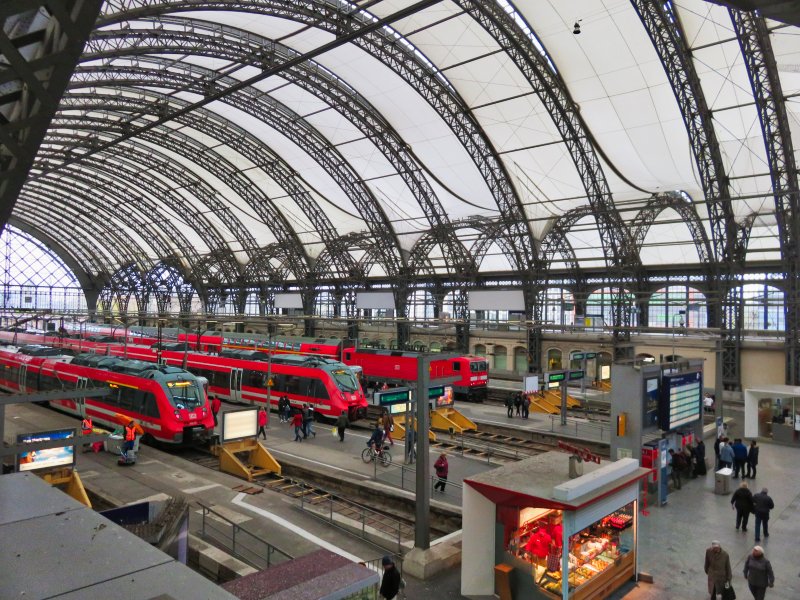
Dresden train station
My hotel was close to the train station. And in that few hundred meters, I walked straight into my first culture shock of that weekend. Everywhere I looked, there were shops and eating places. They were located on multiple floors and huge shopping malls were varied with small shops. Prager Straße was the place where you could get anything you ever wanted. All I got was a quick gyro before I checked myself into my hotel. Tomorrow, Saturday, I was going to explore...
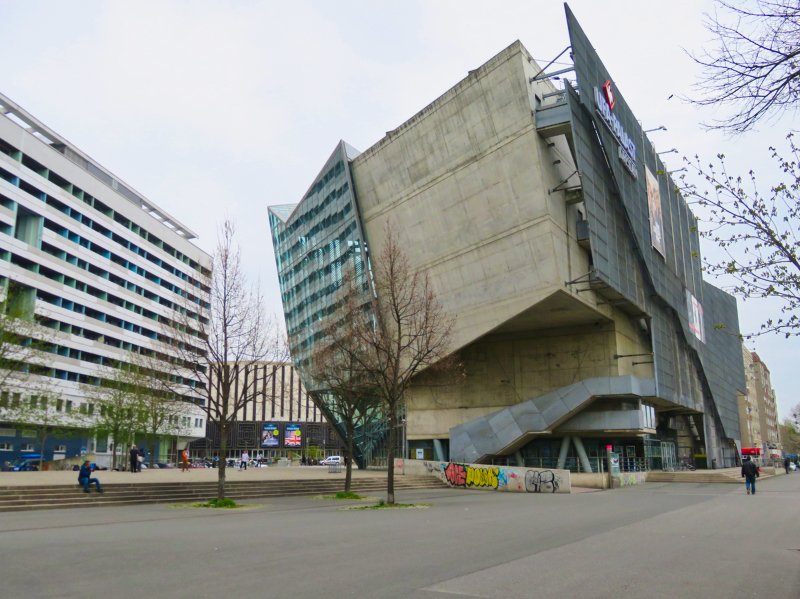
Movie theatre Kristallpalast
The next morning, I bought myself an all-day public transport pass for 6 euro that I hardly used. Public transport is amazing in Dresden though, but I decided to get on a hop-on-hop-off bus instead... Walking to the square that my bus was leaving from, I passed the movie theatre Kristallpalast, that is oddly shaped. The entrance is all glass and at night it looks a bit like you walk into a crystal building. The rest is concrete. They opened this building in 1998 and the architecture of it is supposed to show a huge contrast with the then surrounding concrete plattenbau style from old DDR.
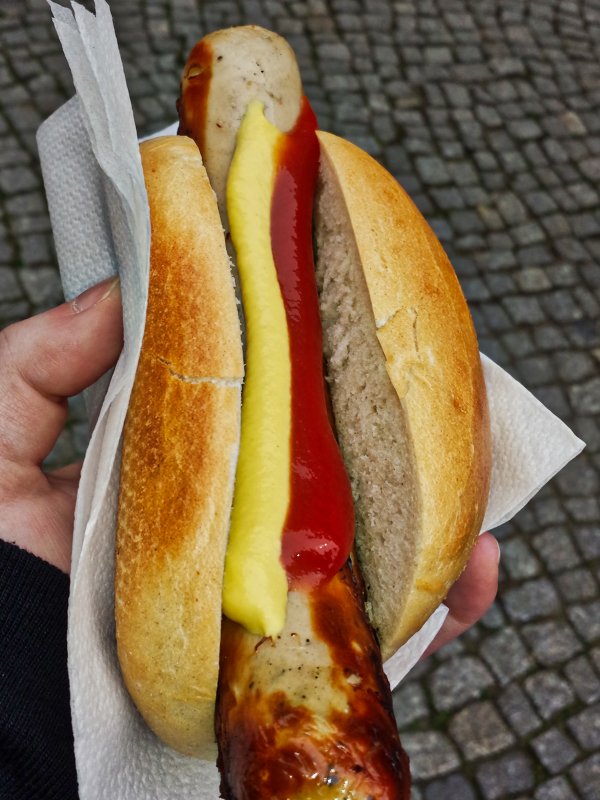
Best bratwurst in town
So I got to the bus stop and I had some time left. The guy hosting the tour told me to use my time wisely and quickly grab the best bratwurst in town at Fleischerei Ernst Schulze. And I am happy that I did. The queue outside already shows that it is something special. And although I am not super fond of bratwurst in general. This one was pretty good!
Minutes later, on the bus, I learned why my hotel street is so packed with shops and seems so modern. At the end of the war, in 1945, the city was almost completely destroyed by firebombing. The Prager Straße was nothing more than rubble and roof tiles. They now turned it into a beautiful shopping street with nice squares and fountains.
More info and photos from the bombing (recommended)
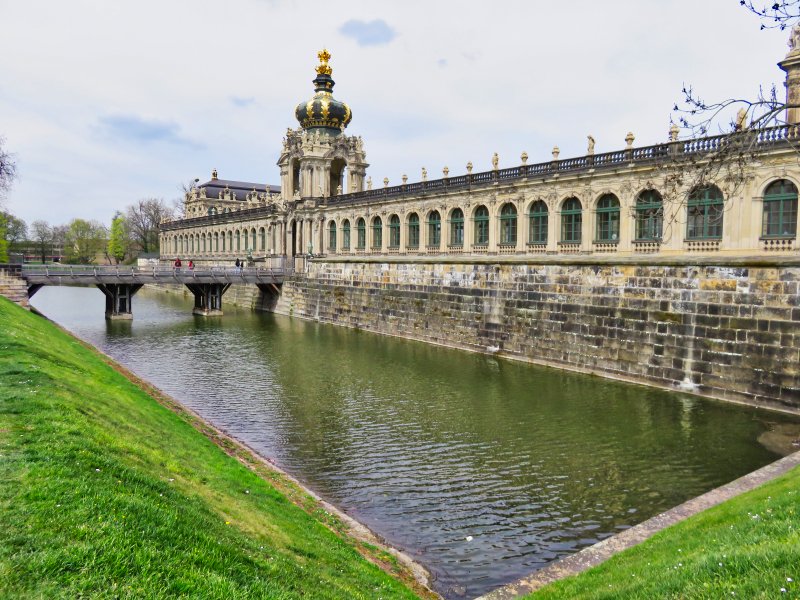
Zwinger outside
First stop: Zwinger, a former palace now museum. The building you see here is not the building that they built in the early 1700s. The bombing also mostly destroyed this palace. Rebuilding started in 1945 but was only completely finished in 1963.
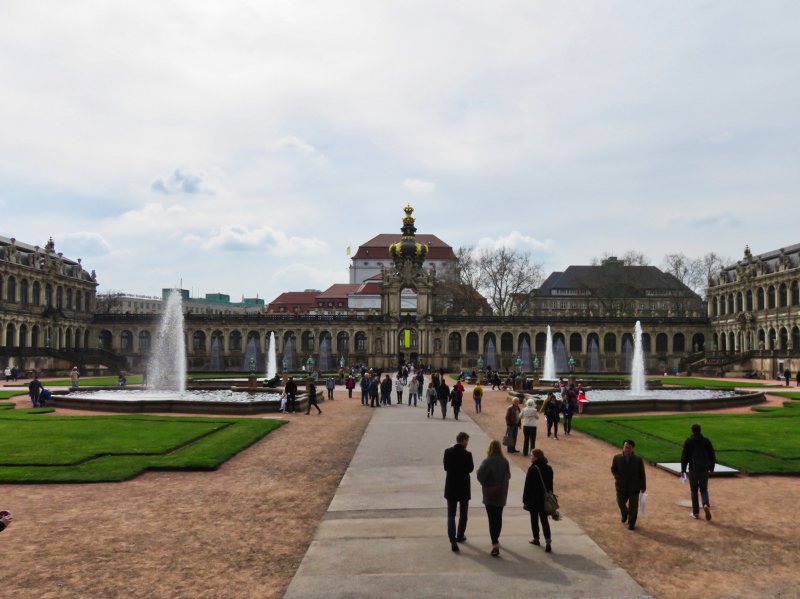
Zwinger gardens
Gradually I got to know Dresden a little better. Alternately I saw boring grey concrete building blocks, pre-war historic buildings, modern architecture or restored buildings. And there was a story behind almost everything.
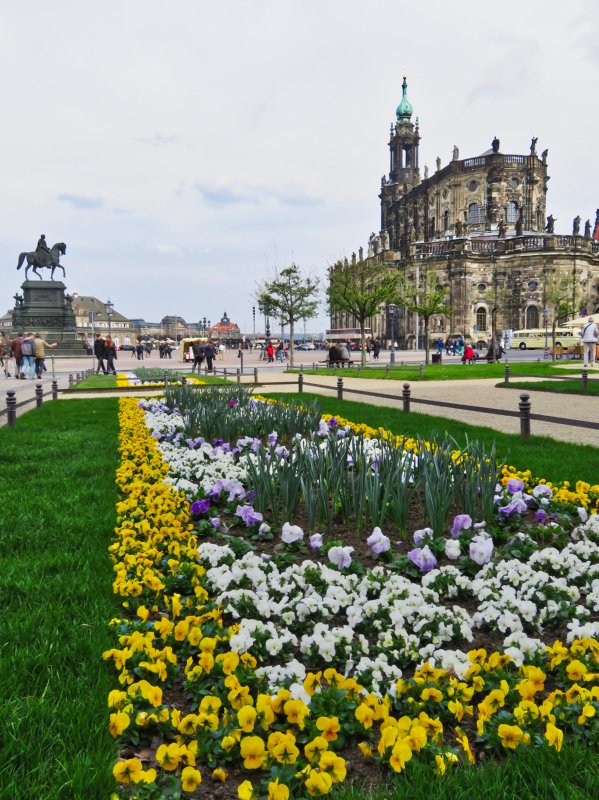
Theaterplatz with the Catholic church
The story that touched me most was that of the Trümmerfrauen (meaning rubble women). They received their own monument with reason. After the war, someone had to clean up the mess when about 90% of the city was destroyed by bombs. And since many men were dead or prisoners of war, the women had to take this job.
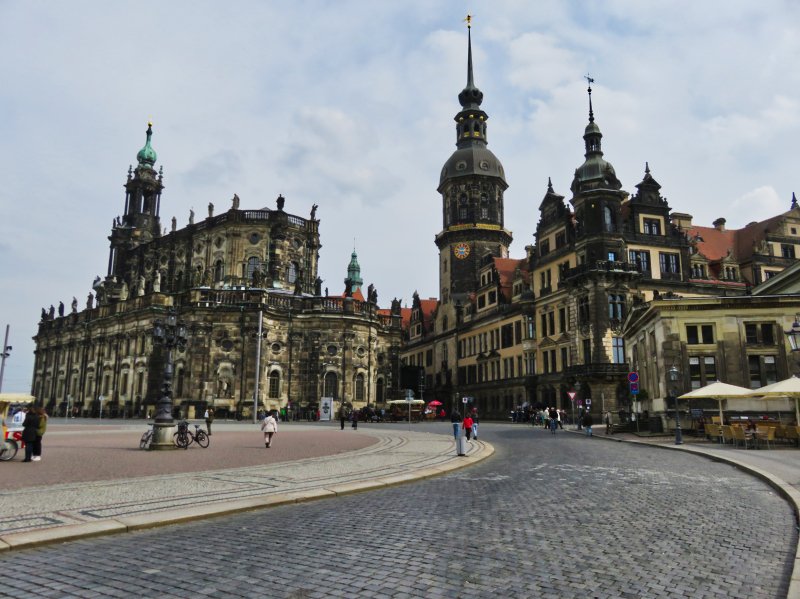
The same Catholic church and Dresden Castle
The Theaterplatz is a nice and wide plaza with many amazing buildings. You will find the Zwinger here, the Catholic church "Hofkircke", the opera house "Semperoper" and Dresden Castle. And guess what? It was all heavily damaged by the bombing.
During the mid-1980s they restored the Catholic church and Semperoper. That means that for almost 40 years, they had to live with those ruins in this area. The castle had to wait a little longer. The restoration of that building only finished in 2013.
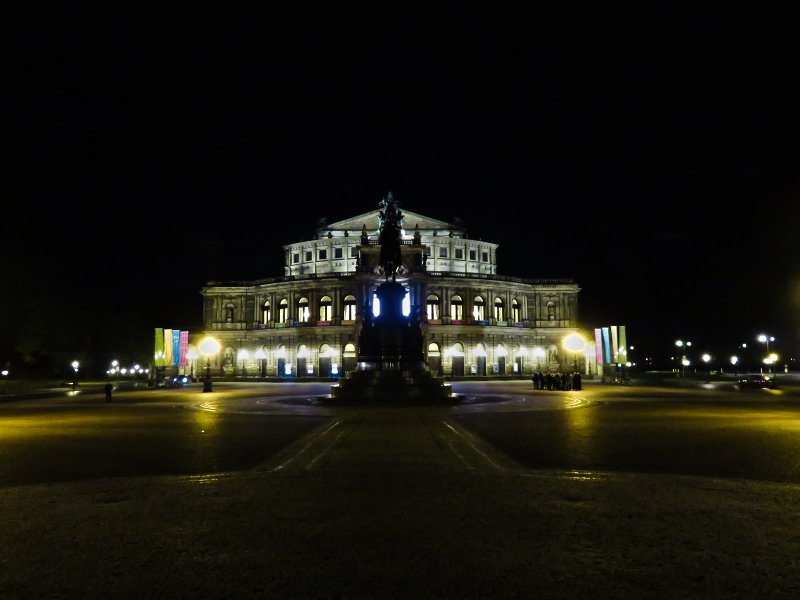
Semperoper at night
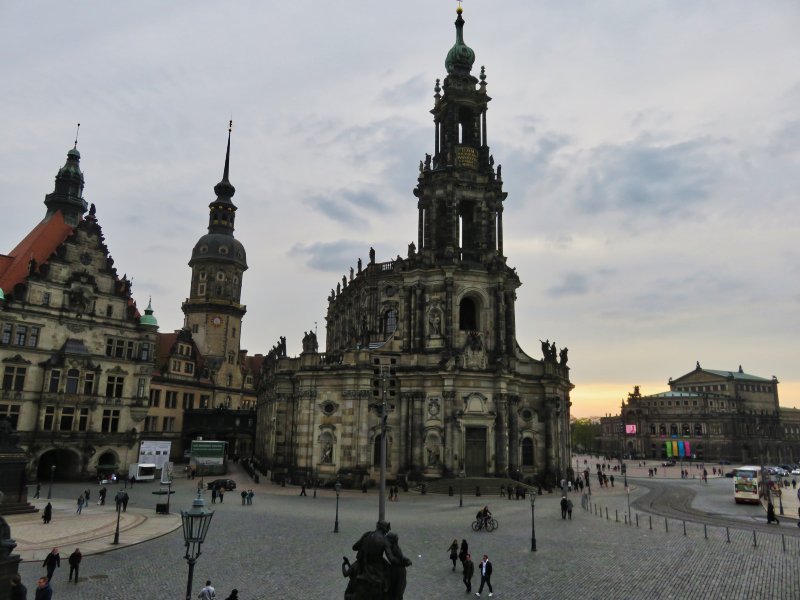
Catholic church with Semperoper in the distance (right)
It may be a surprise to you, but this area was not a part of the historic centre of Dresden. That is why there aren't a lot of residential buildings. It is also close to the river Elbe that regularly brings high water with him/her. When you walk around Dresden you will notice that the banks of the river are vacant or occupied by parks. This makes Dresden a beautiful green city.
So now it was time to move to the old city centre. On the river banks, they have a raised promenade that is nicknamed "the Balcony of Europe". It is part of the city fortifications but also is just a fun spot to grab a coffee and enjoy the views over the Elbe.
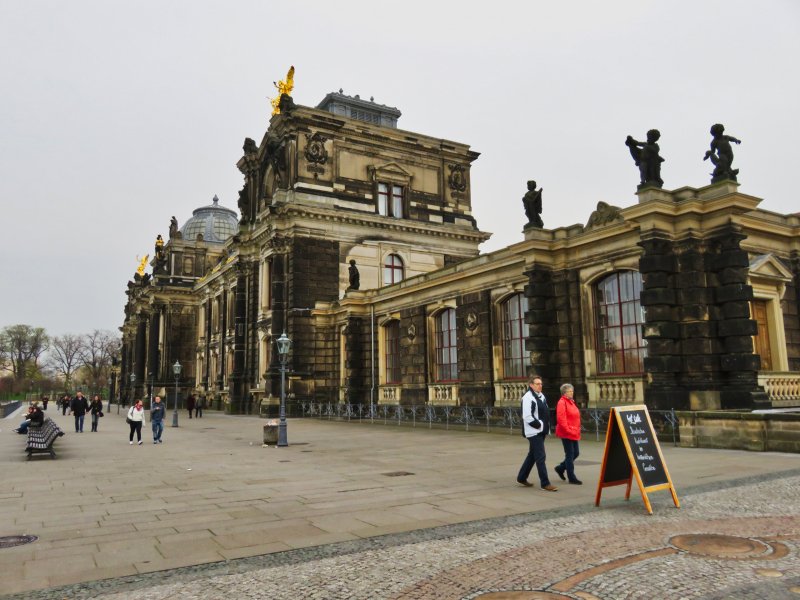
Fine art academy build on the balcony
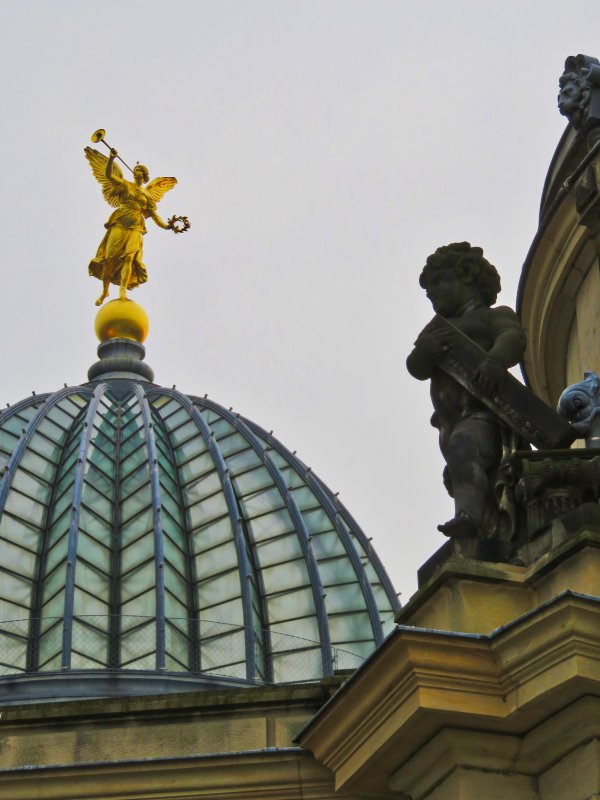
Detail of fine art academy
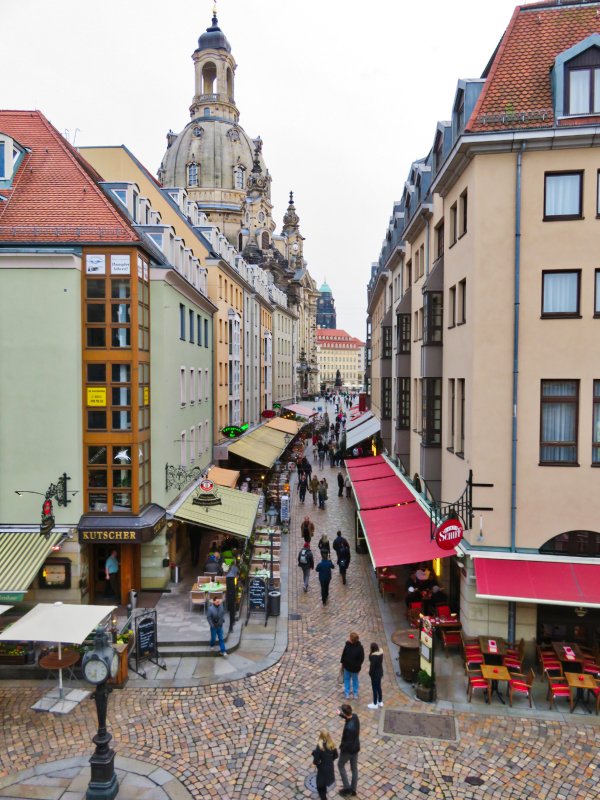
Looking in the direction of the Frauenkirche from the Balcony
Let me talk to you a little about the Frauenkirche, which is located in the heart of Dresden. Of course, this building was also destroyed during the war. And below you can see a photo of what those ruins looked like for many years. Because during the Communist regime, they used the ruins as a monument of how bad the West was.
.jpg)
Source (1989)
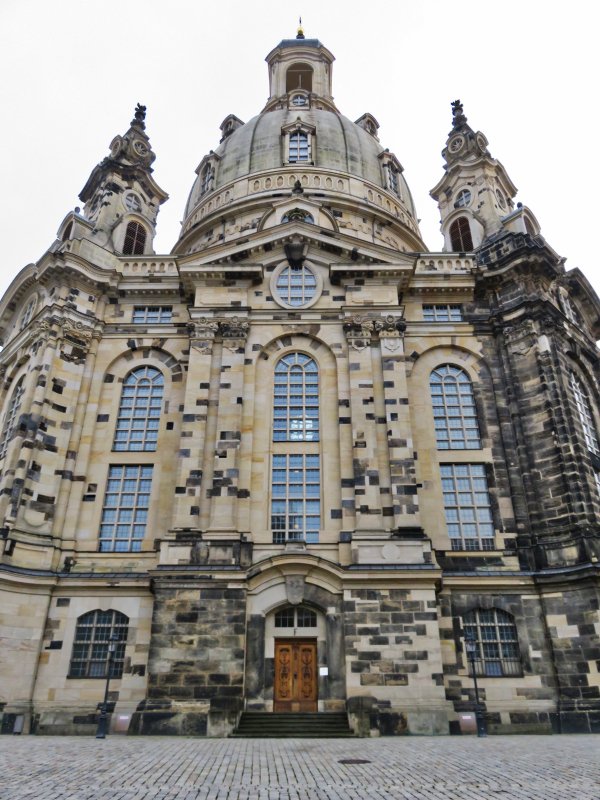
They had no plans to renovate it and only after the fall of the wall & Iron Curtain, they started making plans. They decided to rebuild the church with the original plans and reuse the original materials as much as possible.
That explains the spotted exterior of the church. The dark bits were either parts that were still standing after the bombing or they are stones recovered from the rubble that are now reused at approximately the same location. The complete reconstruction was finished in 2005, 60 years after the bombing took place.
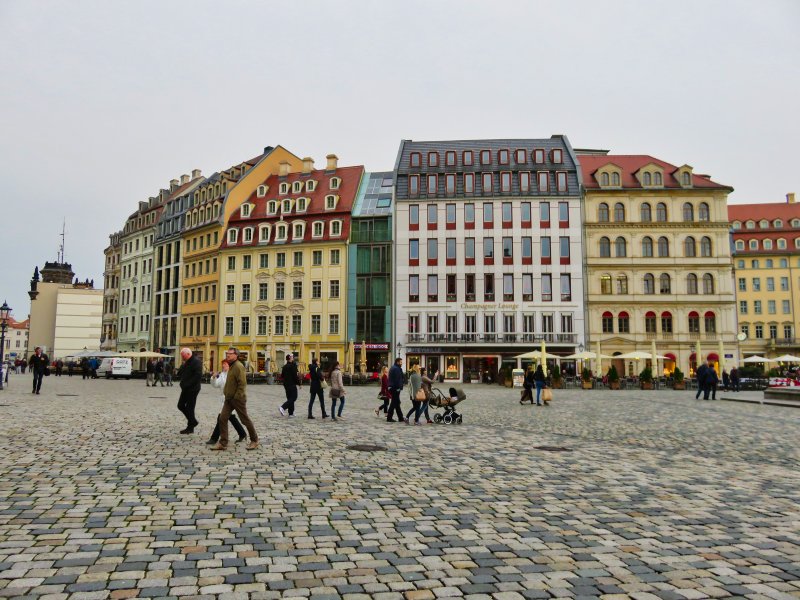
Neumarkt square near the Frauenkirche
Enough with the old city centre. I fell in love with the colourful houses in Dresden, just outside the city centre. These villas are now often used as offices or hotels, but they cheer you up every time you walk around the area. Maybe that is what they needed after the destruction of the war...
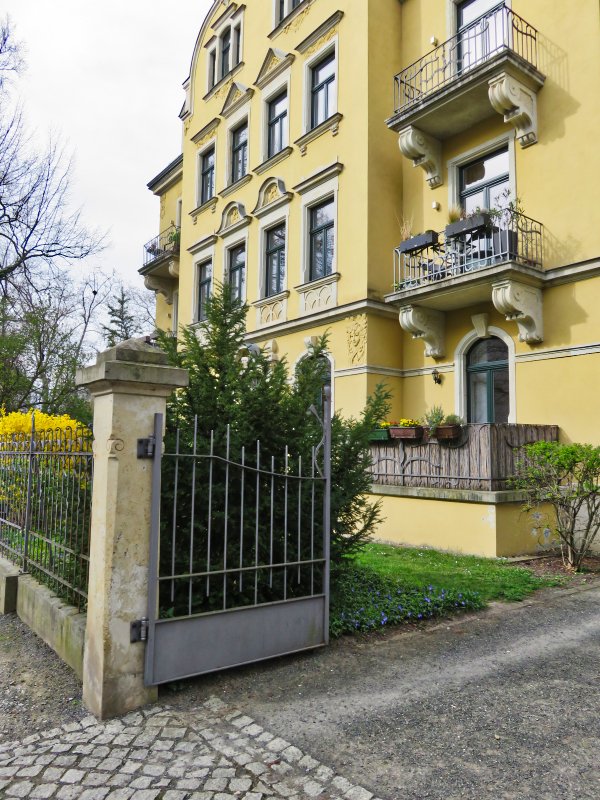

If you don't care about all the stuff I wrote above, I just hope that you scrolled through the photos to get to this point. Because this might be the most unique place in Dresden and you really just HAVE to visit this.
The Kunsthofpassage in the northern part of Dresden is impossible to capture in a way that does it justice. But just look at it!
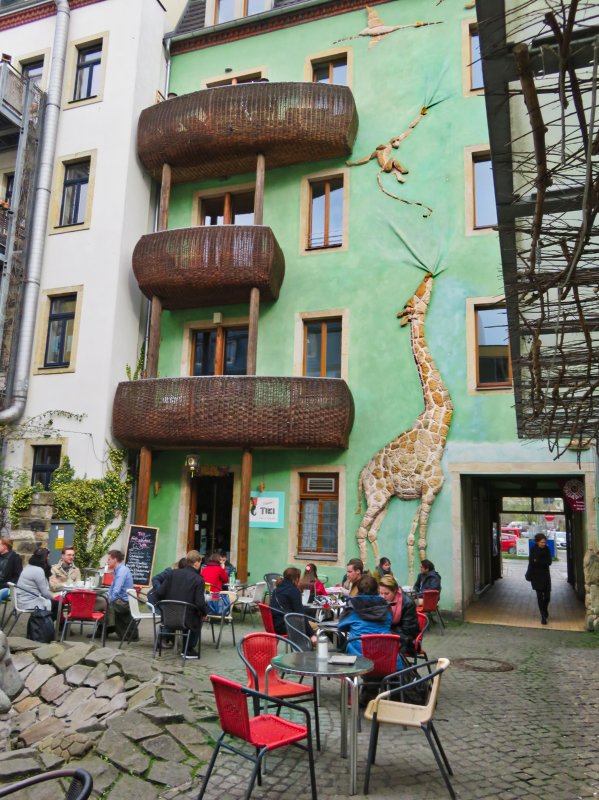
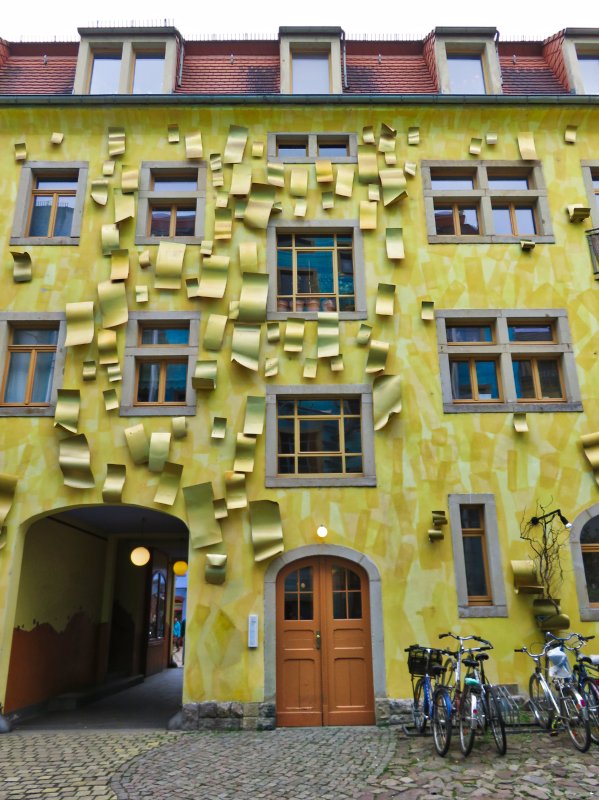
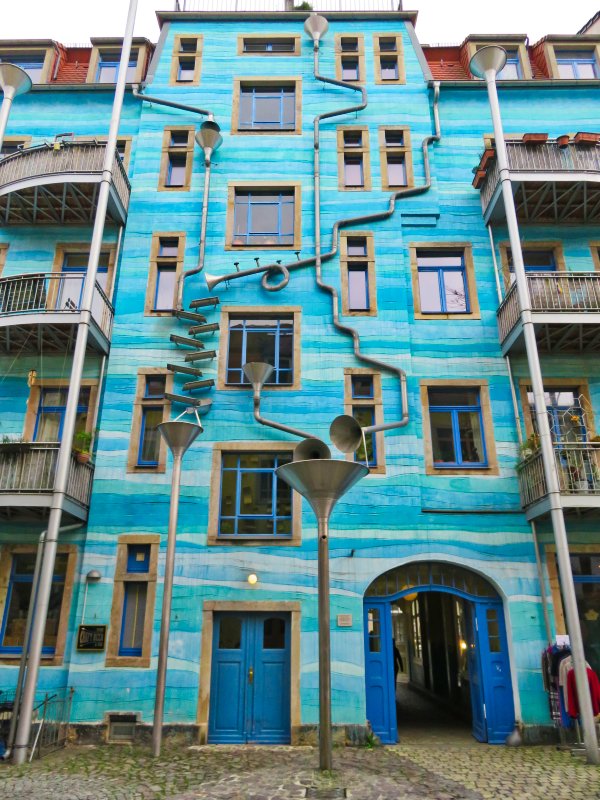
It is a rather hard spot to find, even if you have Google maps with you. But just ask people around, they will point you in the direction of these corridors leading to the courtyard where walls are turned into differently themed artworks. The turquoise one is my personal favourite. I wonder if the piping really works in the rain and what that effect will be.
So yeah, I hope I inspired you to consider visiting Dresden one day. A weekend will be enough, I found. This city has such an impressive story to tell! Hope you enjoyed my version of it!

Also in this series:
- Somewhere in Europe #1: San Pedro del Pinatar, Spain
- Somewhere in Europe #2: Bilbao, Spain
- Somewhere in Europe #3: Algarve, Portugal
- Somewhere in Europe #4: Alghero, Sardinia, Italy
My Ireland series:
- Ireland & the back arse of nowhere #1: Aran Islands
- Ireland & the back arse of nowhere #2: Cliffs of Moher
- Ireland & the back arse of nowhere #3: Gap of Dunloe & Lakes of Killarney
- Ireland & the back arse of nowhere #4: County Donegal
- Ireland & the back arse of nowhere #5: Dingle Peninsula
- Ireland & the back arse of nowhere #6: Howth Cliff Walk
- Ireland & the back arse of nowhere #7: Connemara
My California series:
- Exploring the Golden State #1: Northern Highway One, Avenue of the Giants, The Lost Coast, Eureka!
- Exploring the Golden State #2: Marin County

